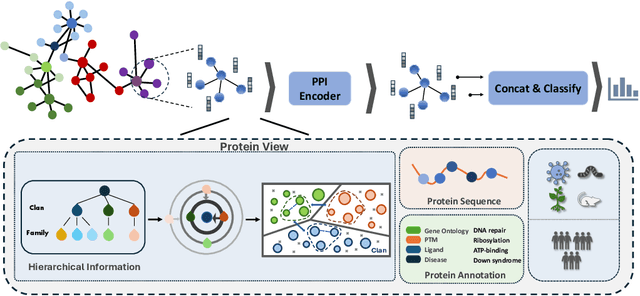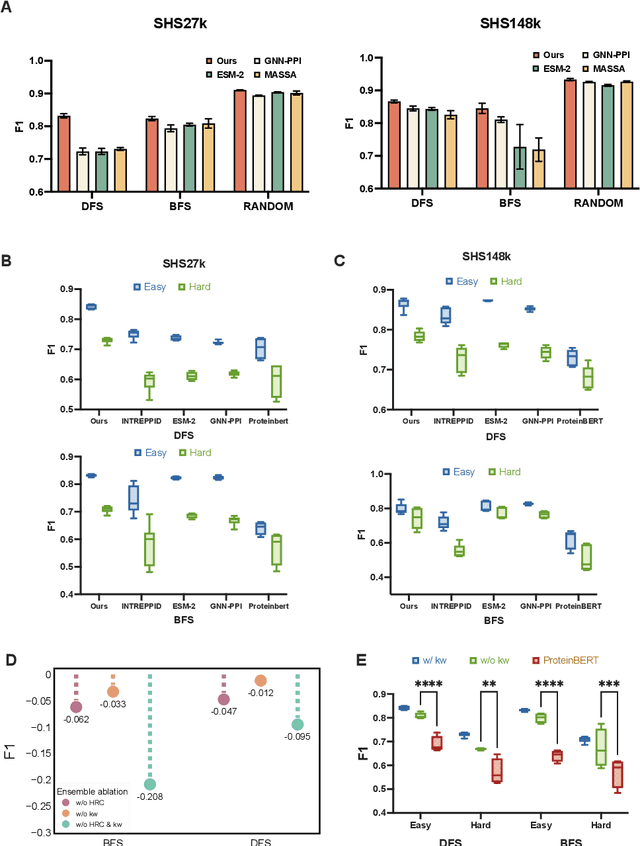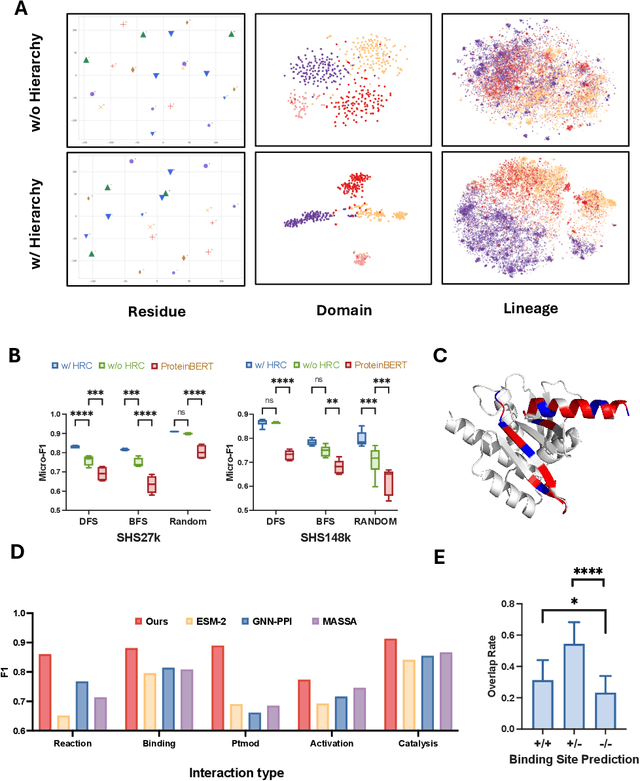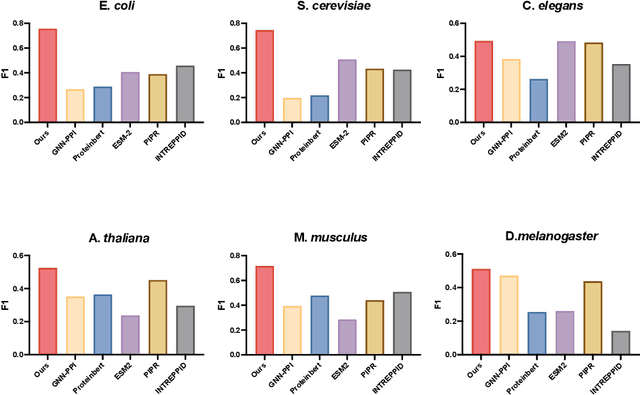Renjing Xu
DEGS: Deformable Event-based 3D Gaussian Splatting from RGB and Event Stream
Oct 09, 2025Abstract:Reconstructing Dynamic 3D Gaussian Splatting (3DGS) from low-framerate RGB videos is challenging. This is because large inter-frame motions will increase the uncertainty of the solution space. For example, one pixel in the first frame might have more choices to reach the corresponding pixel in the second frame. Event cameras can asynchronously capture rapid visual changes and are robust to motion blur, but they do not provide color information. Intuitively, the event stream can provide deterministic constraints for the inter-frame large motion by the event trajectories. Hence, combining low-temporal-resolution images with high-framerate event streams can address this challenge. However, it is challenging to jointly optimize Dynamic 3DGS using both RGB and event modalities due to the significant discrepancy between these two data modalities. This paper introduces a novel framework that jointly optimizes dynamic 3DGS from the two modalities. The key idea is to adopt event motion priors to guide the optimization of the deformation fields. First, we extract the motion priors encoded in event streams by using the proposed LoCM unsupervised fine-tuning framework to adapt an event flow estimator to a certain unseen scene. Then, we present the geometry-aware data association method to build the event-Gaussian motion correspondence, which is the primary foundation of the pipeline, accompanied by two useful strategies, namely motion decomposition and inter-frame pseudo-label. Extensive experiments show that our method outperforms existing image and event-based approaches across synthetic and real scenes and prove that our method can effectively optimize dynamic 3DGS with the help of event data.
Team Xiaomi EV-AD VLA: Learning to Navigate Socially Through Proactive Risk Perception - Technical Report for IROS 2025 RoboSense Challenge Social Navigation Track
Oct 09, 2025Abstract:In this report, we describe the technical details of our submission to the IROS 2025 RoboSense Challenge Social Navigation Track. This track focuses on developing RGBD-based perception and navigation systems that enable autonomous agents to navigate safely, efficiently, and socially compliantly in dynamic human-populated indoor environments. The challenge requires agents to operate from an egocentric perspective using only onboard sensors including RGB-D observations and odometry, without access to global maps or privileged information, while maintaining social norm compliance such as safe distances and collision avoidance. Building upon the Falcon model, we introduce a Proactive Risk Perception Module to enhance social navigation performance. Our approach augments Falcon with collision risk understanding that learns to predict distance-based collision risk scores for surrounding humans, which enables the agent to develop more robust spatial awareness and proactive collision avoidance behaviors. The evaluation on the Social-HM3D benchmark demonstrates that our method improves the agent's ability to maintain personal space compliance while navigating toward goals in crowded indoor scenes with dynamic human agents, achieving 2nd place among 16 participating teams in the challenge.
Adaptive Scaling of Policy Constraints for Offline Reinforcement Learning
Aug 27, 2025Abstract:Offline reinforcement learning (RL) enables learning effective policies from fixed datasets without any environment interaction. Existing methods typically employ policy constraints to mitigate the distribution shift encountered during offline RL training. However, because the scale of the constraints varies across tasks and datasets of differing quality, existing methods must meticulously tune hyperparameters to match each dataset, which is time-consuming and often impractical. We propose Adaptive Scaling of Policy Constraints (ASPC), a second-order differentiable framework that dynamically balances RL and behavior cloning (BC) during training. We theoretically analyze its performance improvement guarantee. In experiments on 39 datasets across four D4RL domains, ASPC using a single hyperparameter configuration outperforms other adaptive constraint methods and state-of-the-art offline RL algorithms that require per-dataset tuning while incurring only minimal computational overhead. The code will be released at https://github.com/Colin-Jing/ASPC.
FARM: Frame-Accelerated Augmentation and Residual Mixture-of-Experts for Physics-Based High-Dynamic Humanoid Control
Aug 27, 2025Abstract:Unified physics-based humanoid controllers are pivotal for robotics and character animation, yet models that excel on gentle, everyday motions still stumble on explosive actions, hampering real-world deployment. We bridge this gap with FARM (Frame-Accelerated Augmentation and Residual Mixture-of-Experts), an end-to-end framework composed of frame-accelerated augmentation, a robust base controller, and a residual mixture-of-experts (MoE). Frame-accelerated augmentation exposes the model to high-velocity pose changes by widening inter-frame gaps. The base controller reliably tracks everyday low-dynamic motions, while the residual MoE adaptively allocates additional network capacity to handle challenging high-dynamic actions, significantly enhancing tracking accuracy. In the absence of a public benchmark, we curate the High-Dynamic Humanoid Motion (HDHM) dataset, comprising 3593 physically plausible clips. On HDHM, FARM reduces the tracking failure rate by 42.8\% and lowers global mean per-joint position error by 14.6\% relative to the baseline, while preserving near-perfect accuracy on low-dynamic motions. These results establish FARM as a new baseline for high-dynamic humanoid control and introduce the first open benchmark dedicated to this challenge. The code and dataset will be released at https://github.com/Colin-Jing/FARM.
Hierarchical Multi-Label Contrastive Learning for Protein-Protein Interaction Prediction Across Organisms
Jul 03, 2025



Abstract:Recent advances in AI for science have highlighted the power of contrastive learning in bridging heterogeneous biological data modalities. Building on this paradigm, we propose HIPPO (HIerarchical Protein-Protein interaction prediction across Organisms), a hierarchical contrastive framework for protein-protein interaction(PPI) prediction, where protein sequences and their hierarchical attributes are aligned through multi-tiered biological representation matching. The proposed approach incorporates hierarchical contrastive loss functions that emulate the structured relationship among functional classes of proteins. The framework adaptively incorporates domain and family knowledge through a data-driven penalty mechanism, enforcing consistency between the learned embedding space and the intrinsic hierarchy of protein functions. Experiments on benchmark datasets demonstrate that HIPPO achieves state-of-the-art performance, outperforming existing methods and showing robustness in low-data regimes. Notably, the model demonstrates strong zero-shot transferability to other species without retraining, enabling reliable PPI prediction and functional inference even in less characterized or rare organisms where experimental data are limited. Further analysis reveals that hierarchical feature fusion is critical for capturing conserved interaction determinants, such as binding motifs and functional annotations. This work advances cross-species PPI prediction and provides a unified framework for interaction prediction in scenarios with sparse or imbalanced multi-species data.
AnnoDPO: Protein Functional Annotation Learning with Direct Preference Optimization
Jun 08, 2025Abstract:Deciphering protein function remains a fundamental challenge in protein representation learning. The task presents significant difficulties for protein language models (PLMs) due to the sheer volume of functional annotation categories and the highly imbalanced distribution of annotated instances across biological ontologies. Inspired by the remarkable success of reinforcement learning from human feedback (RLHF) in large language model (LLM) alignment, we propose AnnoDPO, a novel multi-modal framework for protein function prediction that leverages Direct Preference Optimization (DPO) to enhance annotation learning. Our methodology addresses the dual challenges of annotation scarcity and category imbalance through preference-aligned training objectives, establishing a new paradigm for biological knowledge integration in protein representation learning.
Spiking Transformers Need High Frequency Information
May 24, 2025Abstract:Spiking Transformers offer an energy-efficient alternative to conventional deep learning by transmitting information solely through binary (0/1) spikes. However, there remains a substantial performance gap compared to artificial neural networks. A common belief is that their binary and sparse activation transmission leads to information loss, thus degrading feature representation and accuracy. In this work, however, we reveal for the first time that spiking neurons preferentially propagate low-frequency information. We hypothesize that the rapid dissipation of high-frequency components is the primary cause of performance degradation. For example, on Cifar-100, adopting Avg-Pooling (low-pass) for token mixing lowers performance to 76.73%; interestingly, replacing it with Max-Pooling (high-pass) pushes the top-1 accuracy to 79.12%, surpassing the well-tuned Spikformer baseline by 0.97%. Accordingly, we introduce Max-Former that restores high-frequency signals through two frequency-enhancing operators: extra Max-Pooling in patch embedding and Depth-Wise Convolution in place of self-attention. Notably, our Max-Former (63.99 M) hits the top-1 accuracy of 82.39% on ImageNet, showing a +7.58% improvement over Spikformer with comparable model size (74.81%, 66.34 M). We hope this simple yet effective solution inspires future research to explore the distinctive nature of spiking neural networks, beyond the established practice in standard deep learning.
Occupancy World Model for Robots
May 07, 2025Abstract:Understanding and forecasting the scene evolutions deeply affect the exploration and decision of embodied agents. While traditional methods simulate scene evolutions through trajectory prediction of potential instances, current works use the occupancy world model as a generative framework for describing fine-grained overall scene dynamics. However, existing methods cluster on the outdoor structured road scenes, while ignoring the exploration of forecasting 3D occupancy scene evolutions for robots in indoor scenes. In this work, we explore a new framework for learning the scene evolutions of observed fine-grained occupancy and propose an occupancy world model based on the combined spatio-temporal receptive field and guided autoregressive transformer to forecast the scene evolutions, called RoboOccWorld. We propose the Conditional Causal State Attention (CCSA), which utilizes camera poses of next state as conditions to guide the autoregressive transformer to adapt and understand the indoor robotics scenarios. In order to effectively exploit the spatio-temporal cues from historical observations, Hybrid Spatio-Temporal Aggregation (HSTA) is proposed to obtain the combined spatio-temporal receptive field based on multi-scale spatio-temporal windows. In addition, we restructure the OccWorld-ScanNet benchmark based on local annotations to facilitate the evaluation of the indoor 3D occupancy scene evolution prediction task. Experimental results demonstrate that our RoboOccWorld outperforms state-of-the-art methods in indoor 3D occupancy scene evolution prediction task. The code will be released soon.
RoboOcc: Enhancing the Geometric and Semantic Scene Understanding for Robots
Apr 20, 2025Abstract:3D occupancy prediction enables the robots to obtain spatial fine-grained geometry and semantics of the surrounding scene, and has become an essential task for embodied perception. Existing methods based on 3D Gaussians instead of dense voxels do not effectively exploit the geometry and opacity properties of Gaussians, which limits the network's estimation of complex environments and also limits the description of the scene by 3D Gaussians. In this paper, we propose a 3D occupancy prediction method which enhances the geometric and semantic scene understanding for robots, dubbed RoboOcc. It utilizes the Opacity-guided Self-Encoder (OSE) to alleviate the semantic ambiguity of overlapping Gaussians and the Geometry-aware Cross-Encoder (GCE) to accomplish the fine-grained geometric modeling of the surrounding scene. We conduct extensive experiments on Occ-ScanNet and EmbodiedOcc-ScanNet datasets, and our RoboOcc achieves state-of the-art performance in both local and global camera settings. Further, in ablation studies of Gaussian parameters, the proposed RoboOcc outperforms the state-of-the-art methods by a large margin of (8.47, 6.27) in IoU and mIoU metric, respectively. The codes will be released soon.
Modality-Composable Diffusion Policy via Inference-Time Distribution-level Composition
Mar 16, 2025Abstract:Diffusion Policy (DP) has attracted significant attention as an effective method for policy representation due to its capacity to model multi-distribution dynamics. However, current DPs are often based on a single visual modality (e.g., RGB or point cloud), limiting their accuracy and generalization potential. Although training a generalized DP capable of handling heterogeneous multimodal data would enhance performance, it entails substantial computational and data-related costs. To address these challenges, we propose a novel policy composition method: by leveraging multiple pre-trained DPs based on individual visual modalities, we can combine their distributional scores to form a more expressive Modality-Composable Diffusion Policy (MCDP), without the need for additional training. Through extensive empirical experiments on the RoboTwin dataset, we demonstrate the potential of MCDP to improve both adaptability and performance. This exploration aims to provide valuable insights into the flexible composition of existing DPs, facilitating the development of generalizable cross-modality, cross-domain, and even cross-embodiment policies. Our code is open-sourced at https://github.com/AndyCao1125/MCDP.
 Add to Chrome
Add to Chrome Add to Firefox
Add to Firefox Add to Edge
Add to Edge